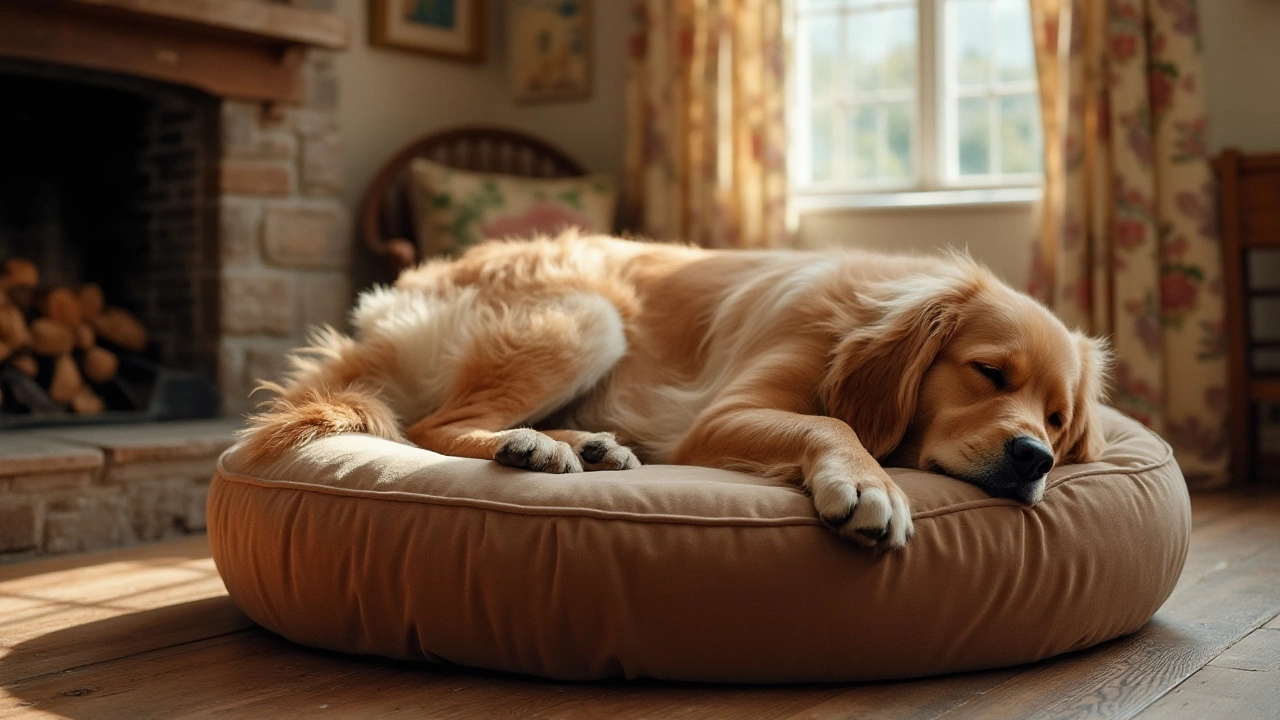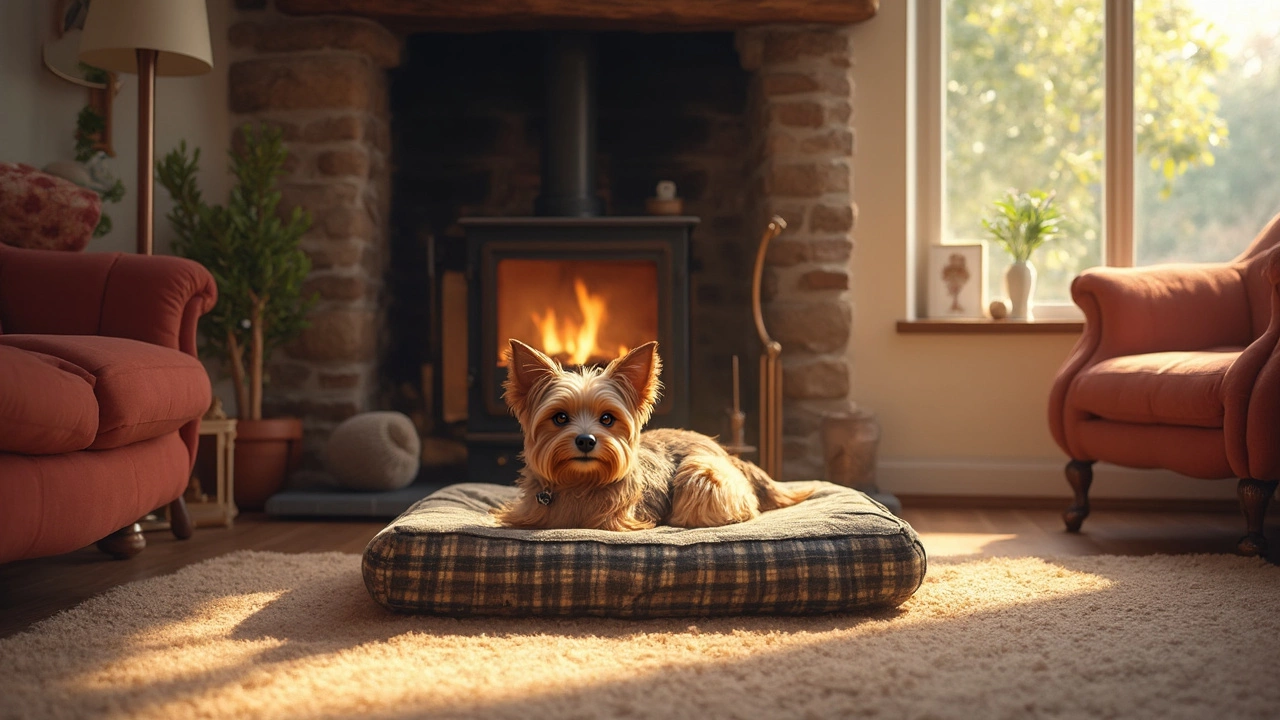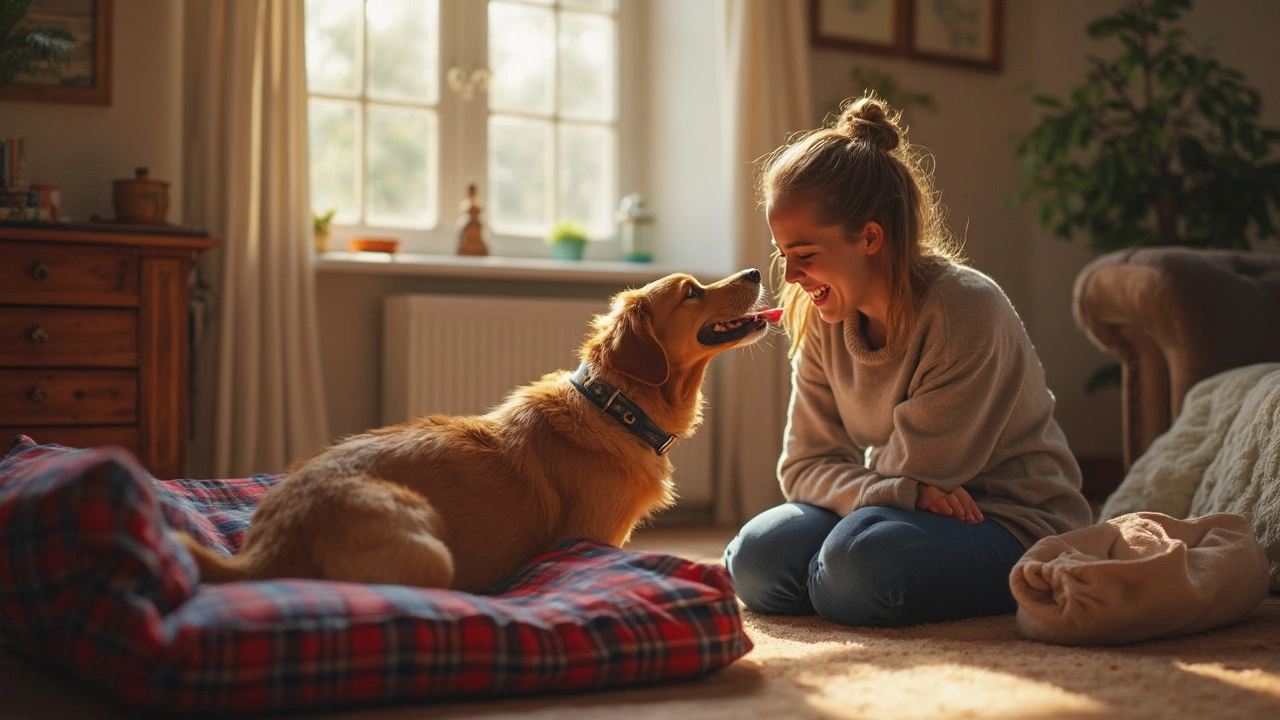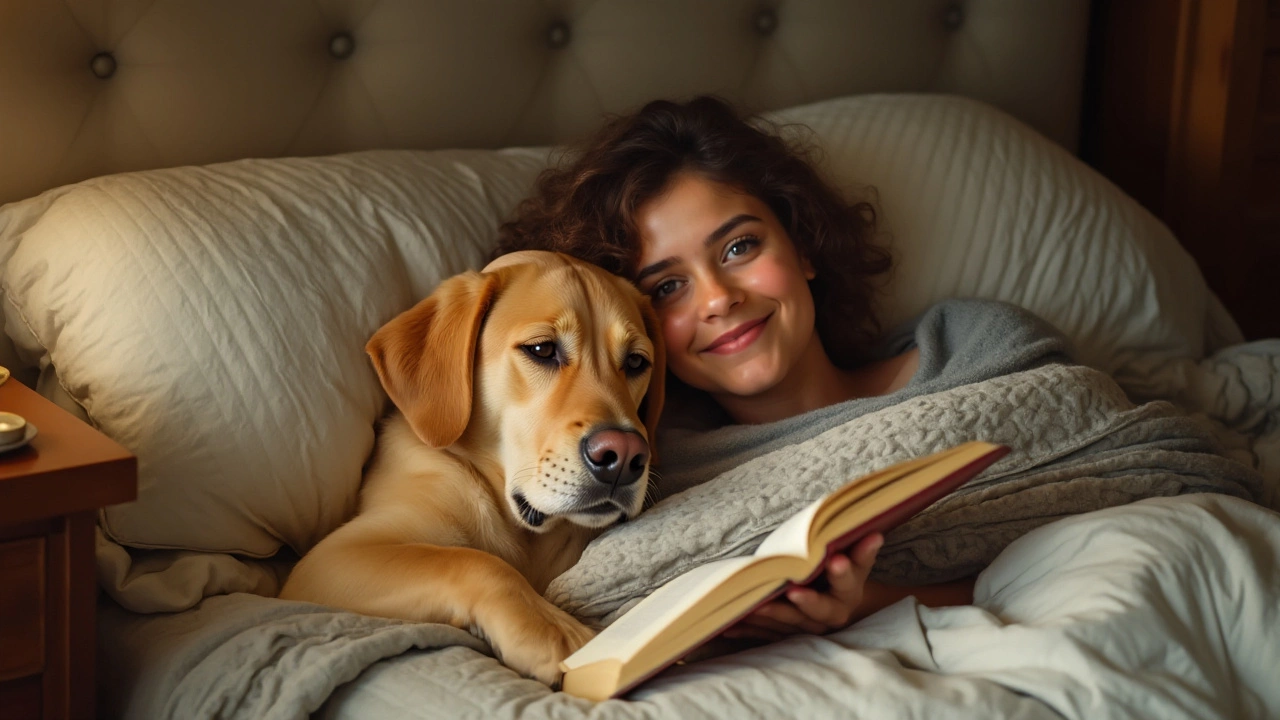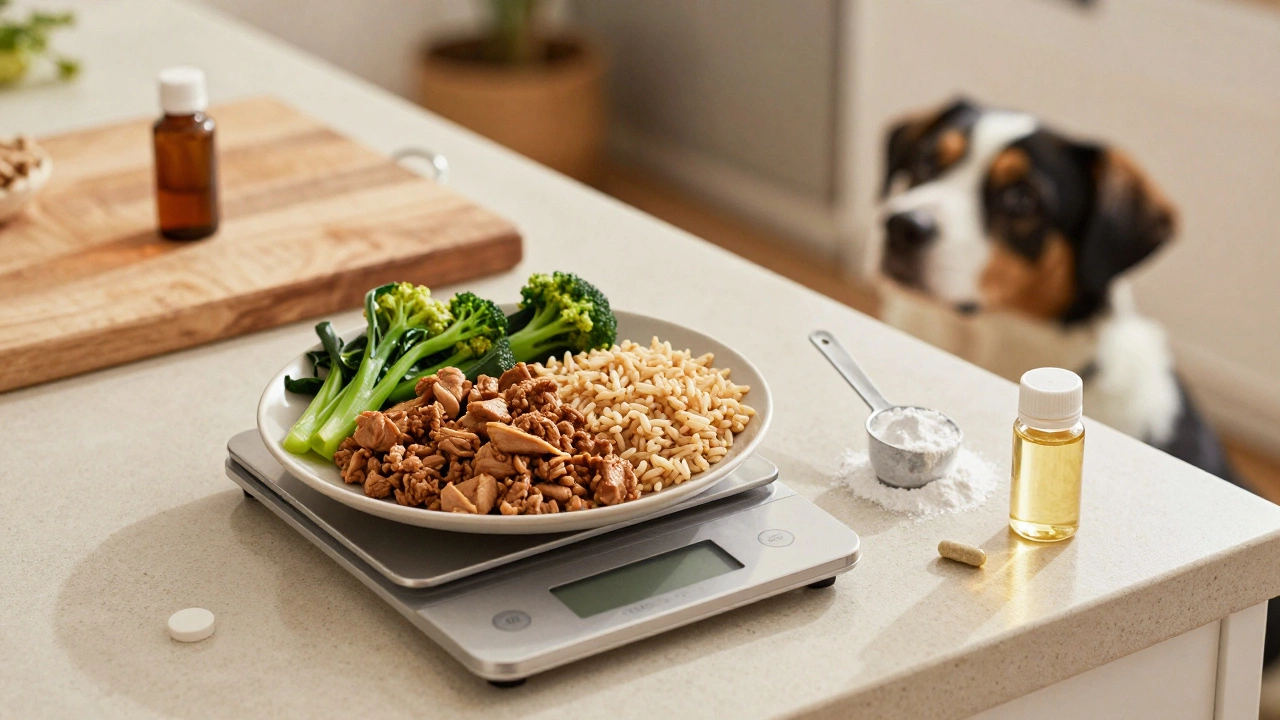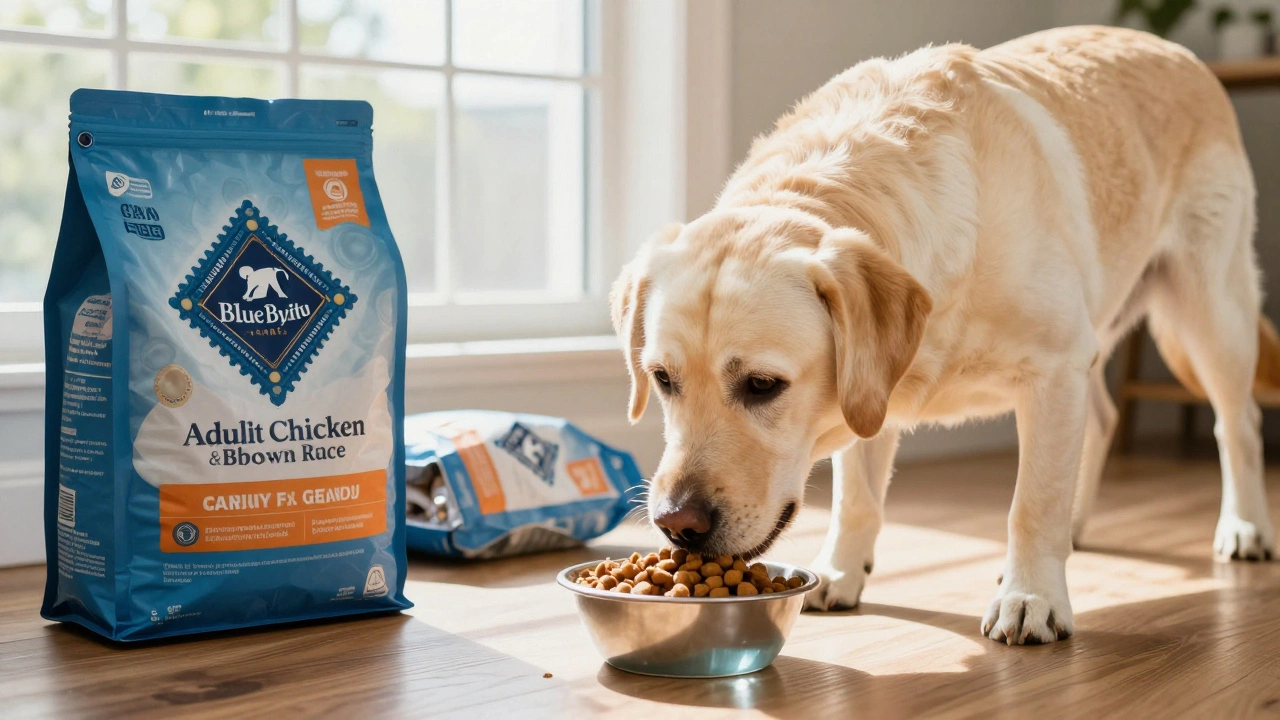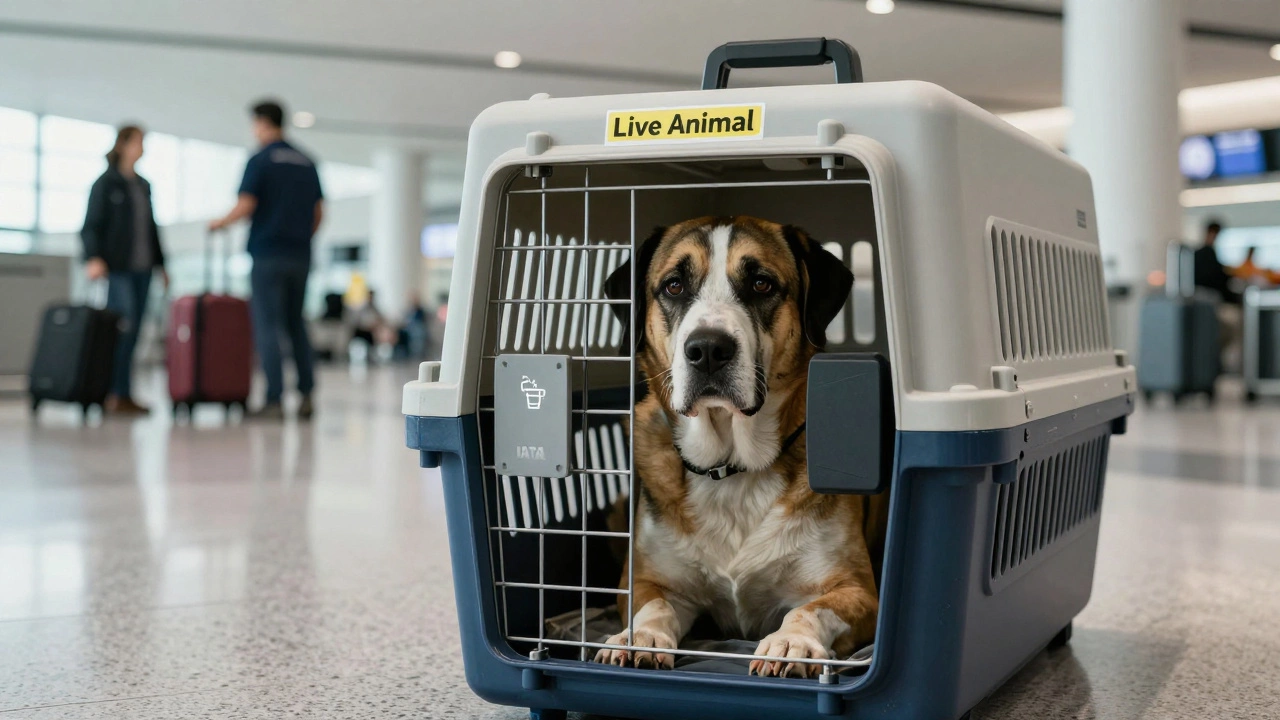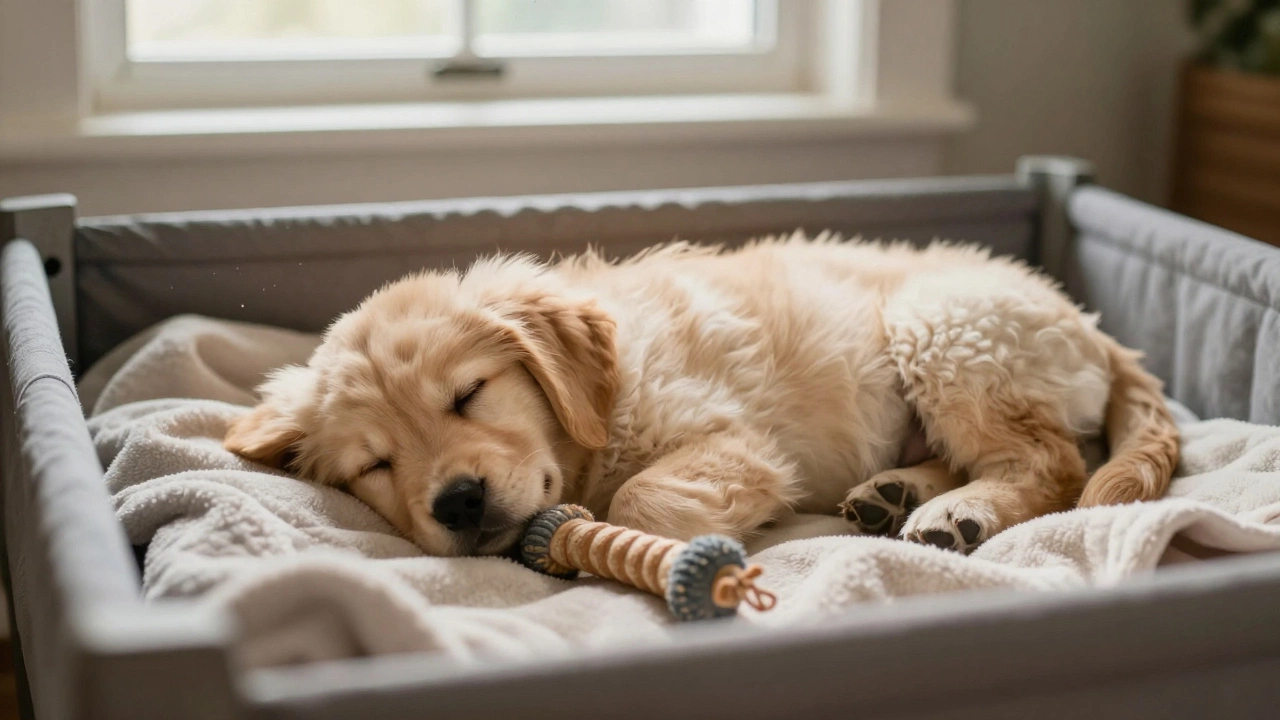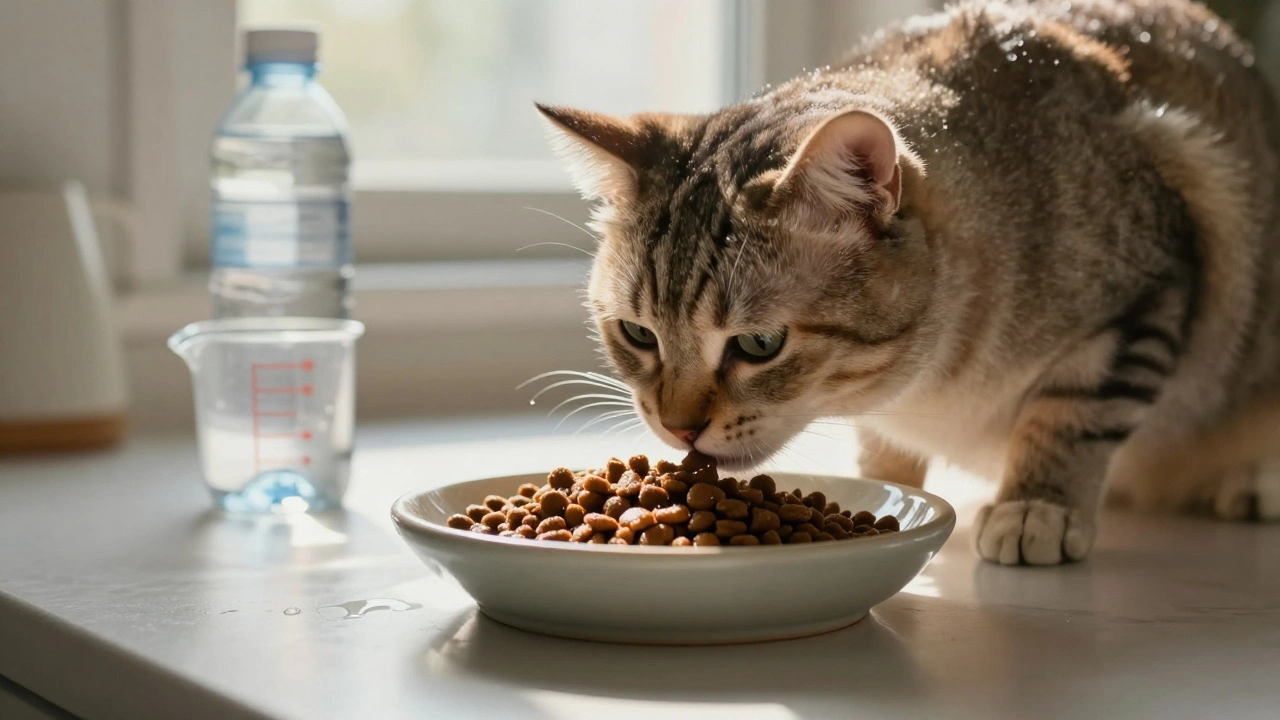As any dog owner knows, choosing the right bed for your furry companion is more than just a matter of aesthetics. It's about comfort, security, and making sure your dog feels as cozy as a bug in a rug. But a common question arises: do dogs have a preference between round and rectangle beds?
Before jumping to conclusions, it's essential to consider a dog's sleeping habits. Just like humans, dogs have unique preferences and peculiarities when it comes to catching Zs. Some dogs love to sprawl out, taking up as much room as possible, while others prefer curling up into a tiny ball.
In this article, we'll take a deep dive into the advantages of both round and rectangle dog beds. We'll look at how each shape can cater to different dogs and discuss some helpful tips to guide you in making the best choice for your four-legged friend. So, whether you have a sprawler or a snuggler, you're in the right place.
- Understanding Dog Sleeping Habits
- Pros and Cons of Round Beds
- Pros and Cons of Rectangle Beds
- Tips for Choosing the Right Bed
Understanding Dog Sleeping Habits
If you've ever caught yourself gazing at your sleeping dog and wondering what goes on in that furry head of theirs when they're off in dreamland, you're in excellent company. Understanding a dog's sleeping habits is akin to peeking into their world, offering both insights and challenges for ensuring their comfort. Dogs, much like humans, have varied and unique sleeping positions that say quite a bit about their personality and psyche. Is your pooch the type who flops on its back with limbs splayed at odd angles, or does it curl into a tight circle like a cinnamon bun? Each position has its reasons, often rooted in the breed's history, the environment they feel secure in, or simply personal comfort.
When a dog sleeps curled up, its spine forms a perfect crescent. This position is common among wild canines, as it allows them to conserve heat and protect their vital organs from potential attacks. Dog breeds like Huskies or Shiba Inus often exhibit this instinctive behavior, reflecting their genetic predisposition. On the flip side, those that lie on their backs with exposed bellies are showcasing trust and comfort in their surroundings. Only when they feel safe will they risk such vulnerability. This can often be observed in breeds like Greyhounds or Whippets, who have learned that their homes pose no threat.
A fascinating tidbit comes from animal behaviorists, who suggest that a dog's sleeping position can correlate with their health or emotional state. Digging deeper, dogs that stretch out on their sides or stomachs are typically resting lightly, possibly ready to spring into action if needed. For instance, according to a study conducted by The American Kennel Club, about 45% of dogs prefer the 'side sleeper' position, hinting at their comfort level in their environment. Dogs often choose this during the warmer months to help with temperature regulation.
"It's crucial to match a dog's sleeping habitat to their preferences for optimal rest," suggests Dr. Sarah Moore from the University of Bristol's Veterinary School.
As a responsible pet owner keen on understanding their pet better, noting these subtleties and matching them with suitable dog beds can mean all the difference between restful naps and nightly prowls. Observing your dog's choices over a week or two, making note of the frequent positions they favor, especially when they seem relaxed, can provide insights into what bed might suit them best. These observations pave the way to making informed decisions about whether a round or rectangle beds cater to their needs. This reflective approach could indeed be the ticket to creating a sanctuary of rest for man's best friend.
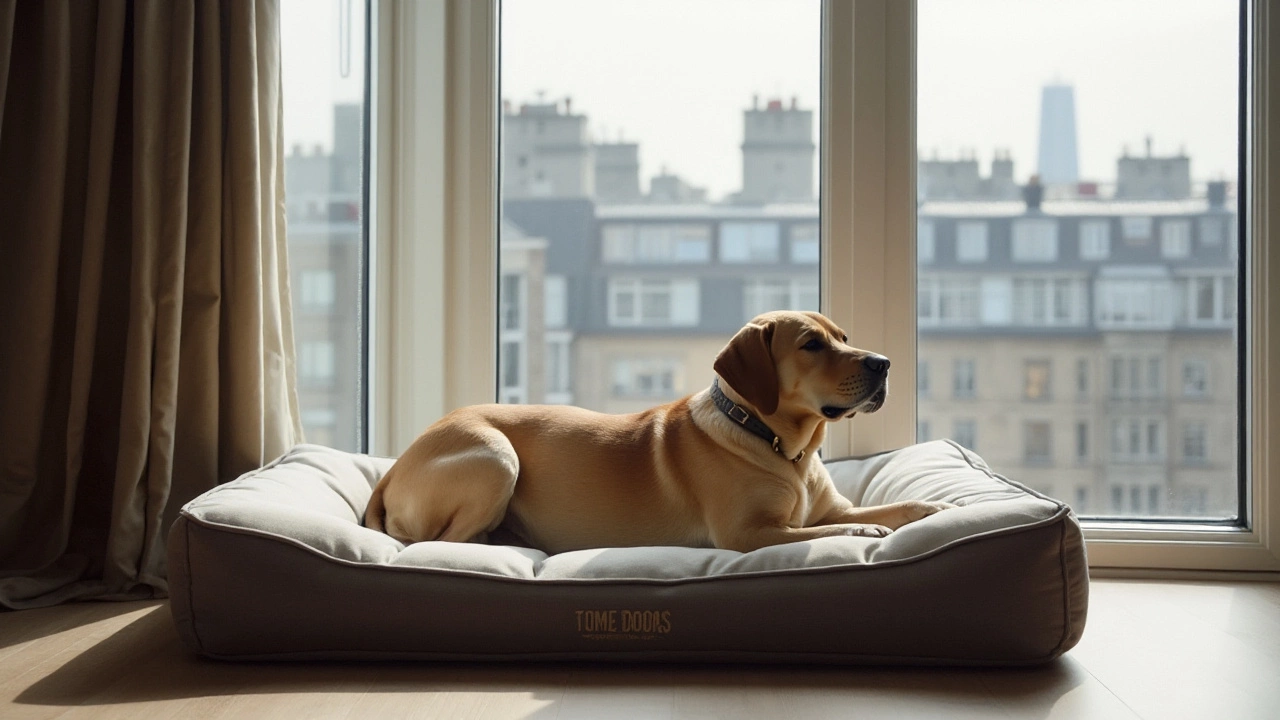
Pros and Cons of Round Beds
Round beds often evoke comparisons to cozy nests or snug cocoons, and this is no accident. Structurally, the round beds are designed with a continuous edge that can provide a sense of security for dogs who naturally curl up to sleep. This makes them particularly appealing for smaller breeds or those dogs who like to keep an eye on their perimeter while napping. An interesting fact is that dogs who are inclined to curl up may do so to conserve body heat, just as their ancestors did in the wild. This instinctual behavior makes round beds an excellent match for them.
On the flip side, the compact nature of a round bed might not be the best fit for larger breeds or dogs that love to stretch out their limbs after a long day of play. While some round beds can accommodate sprawling dogs, they often lack the expansive area that those dogs might prefer. Additionally, while small dogs often find solace in the enclosed space, larger dogs can feel restricted due to the limited space a round shape offers. As Jessica Vogelsang, a veterinarian and author, notes,
"Choosing the right bed often involves trial and error, as much as understanding the peculiarities of your pet’s behavior."
Advantages of Round Beds
One of the prime benefits of round dog beds is their ability to fit seamlessly into various home spaces. Their soft edges and symmetry can lend an aesthetic appeal that some owners find pleasing, especially when curating their home's decor. Beyond the aesthetics, the circular design can also prevent corners, which are often the areas that tend to wear out most quickly. The lack of edges means fewer frayed areas over time, indicating a potential for increased durability.
Moreover, many round beds come with raised edges or bolsters, which can provide additional orthopedic support. These bolsters permit dogs to rest their heads comfortably, promoting better neck and spine alignment. This can be especially beneficial for older dogs or those with joint issues, making round beds a practical option in terms of both comfort and health.
Disadvantages of Round Beds
However, there are also some potential downsides to consider. As previously touched upon, space limitations can be an issue, especially for more active dogs that like to stretch out while they sleep. Also, for some households, the round shape can make optimal placement within a room tricky, potentially leading to inefficient use of space. Furthermore, round beds often have a unique design that may not always cater to all dogs' tastes or behaviors, particularly those dogs who are omnidirectional sleepers.
A study on dog sleeping patterns showed that while 60% of dogs preferred to curl up, there remains a significant portion that favored laying flat, indicating that one size – or shape – certainly does not fit all. This diversity in preference indicates the need for pet owners to observe their dogs' natural tendencies closely when selecting a bed. Additionally, because round beds tend to prioritize snug fit over sprawl, some owners may find themselves needing to replace the bed sooner to accommodate a growing pet or a change in their dog's sleeping style.
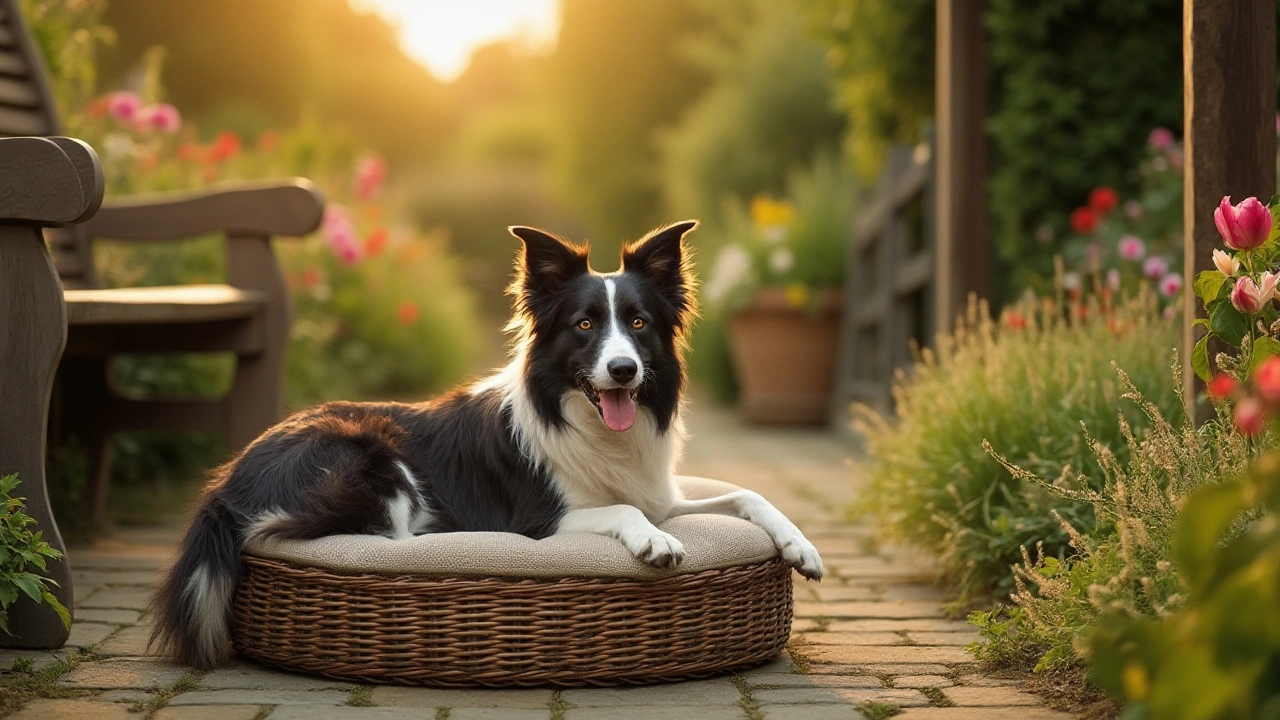
Pros and Cons of Rectangle Beds
Rectangle beds have long been a staple in the realm of pet comfort, adored for their traditional design and versatility. One of the most significant advantages of rectangle beds is their ability to cater to dogs who like to spread out while they sleep. If you’ve ever seen your dog sprawled out, with legs in all directions, a rectangle bed might just be a perfect match. These rectangle beds offer ample space, often coming with bolstered edges that serve as a pillow, making them ideal for larger breeds or dogs that enjoy stretching their limbs after a long day of play.
Nevertheless, rectangle beds have their challenges. Despite their spacious surface, they seldom convey that snug, enveloping feeling which curling-up dogs crave. Certain dogs seek a more cocoon-like environment, something that rectangle beds might not readily provide. Additionally, these beds can take up a considerable amount of space, particularly in smaller homes or apartments, which could be a logistical hurdle for some pet owners. Maintenance can also become an issue; with their large size, washing and drying them could be more cumbersome compared to their round counterparts.
"Rectangle beds indeed afford a wonderful stretch-out opportunity for dogs," says Dr. Emma Milne, a renowned veterinary behaviorist. "But always consider your dog's unique quirks and habits."
From an aesthetic perspective, rectangle beds often offer a larger selection of patterns and colors, providing options to match almost any interior design. They're typically designed to fit into corners or against walls, ensuring they suit a variety of room layouts. For those who have dogs with orthopedic problems, rectangle beds with memory foam or orthopedic features may provide the ideal sleeping solution, supporting joints and facilitating easier movements. In a nutshell, these beds cater well to multiple needs if spatial constraints are not a primary concern.
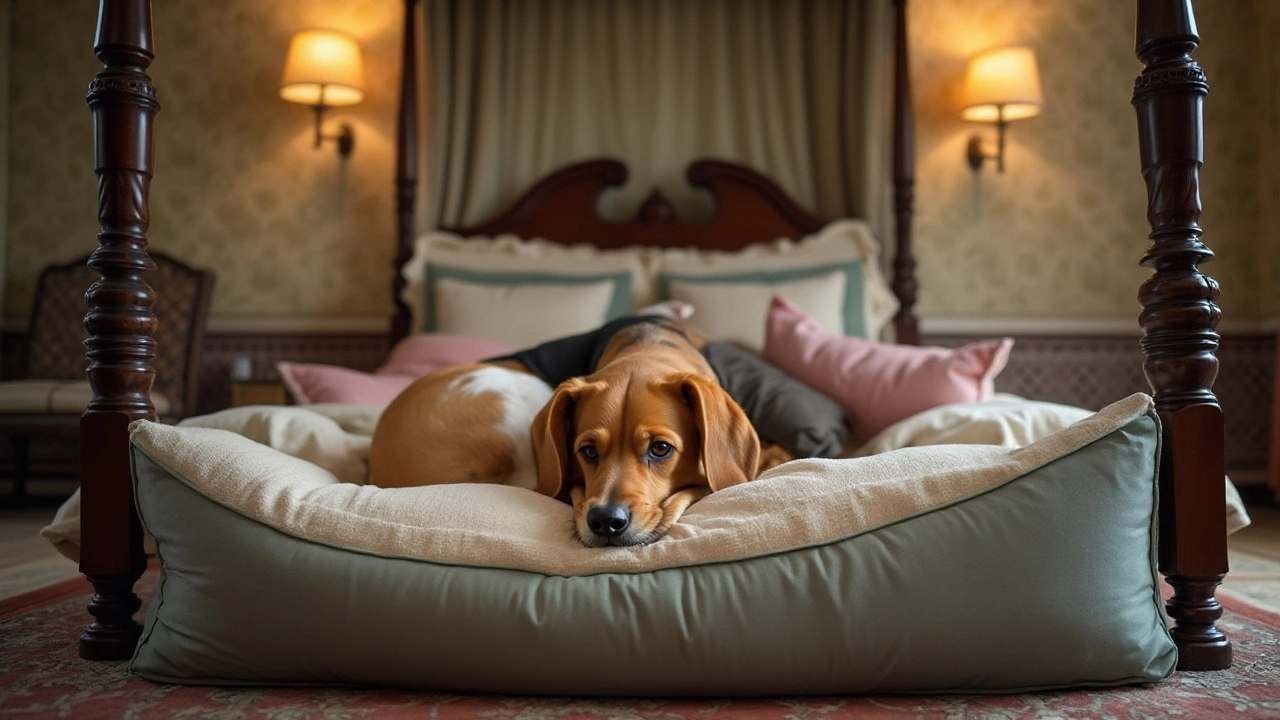
Tips for Choosing the Right Bed
Picking the perfect bed for your four-legged friend isn't just a walk in the park. It requires digging deep into the essentials that make a bed more than just a piece of furnishing in your home. First off, consider your dog’s unique sleeping style. Are they a sprawler, stretching out all their limbs, or a snuggler that curls into a cozy donut-like spot? This characteristic greatly influences whether a round or a rectangular bed would suit them best. A bed plays a crucial role in supporting their sleeping habits, providing comfort after long walks or energetic play sessions.
When deciding, you should consider the size of your furry companion. Dogs, much like us, enjoy having some extra space without it being overwhelmingly large. Measure your dog while they’re lying down in their usual position and add a few inches to find a comfortable fit. Remember those adorable yet clumsy growth spurts if you’re shopping for a puppy—purchase a bed that can accommodate their size as they grow. Having an oversized bed for a growing pup can save you money long-term and create a consistent sleep haven.
Material Matters
The next point of order is the bed's material and construction. You want something durable that can withstand a few paw stretches and maybe even some playful chewing. The fabric choice can be a reflection of your dog’s lifestyle and, maybe, tug-of-war habits. A highly active dog could benefit from beds made with heavy-duty fabrics, while a more relaxed dog might prefer softer materials. Not to mention, some dogs have a knack for mud or water, so it might be wise to choose a bed that's water-resistant or easy to clean. Look for beds with removable and machine washable covers to keep things fresh and hygienic.
The Importance of Support
For many dogs, especially those older or with joint issues, the type of support a bed offers is pivotal. Memory foam or pillow-filled designs can provide much-needed support, offering relief to aching joints or sore muscles. Imagine sinking into a marshmallow cloud after a long doggy day! If your dog often has trouble getting onto the couch or into your bed, a supportive, comfortable dog bed on the floor can be an inviting alternative. Some beds even come with built-in heat pads, which might be a comforting option during the colder months, particularly for short-haired breeds.
Quirky Extras
While standard beds are great, why not consider a bed with a few fun features? Some offer unique designs, like canopy beds, doubling as a sleeping space and a play zone. There are even beds with built-in toys or pockets for snacks — perfect for the playful pup who needs constant entertainment. Of course, keep in mind the space in your home, as dogs often enjoy their private spot, much like we humans do. Make it a secluded, yet accessible part of the room where they can retreat.
"Selecting the right bed is tantamount to choosing the perfect shoes. It should be a marriage of comfort, style, and undue support for your every step," noted Dr. Samantha Hughes, a renowned veterinarian from the UK.
As you navigate through choices and options for dog beds, remember the heart of your decision-making lies in giving them comfort. It matters because they give us the world with their wagging tails. Be it round or rectangle, the aim is to ensure they can drift into a peaceful slumber after their exciting day of doggy adventures.

